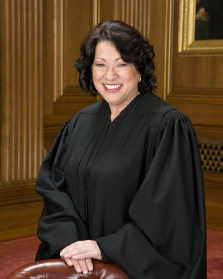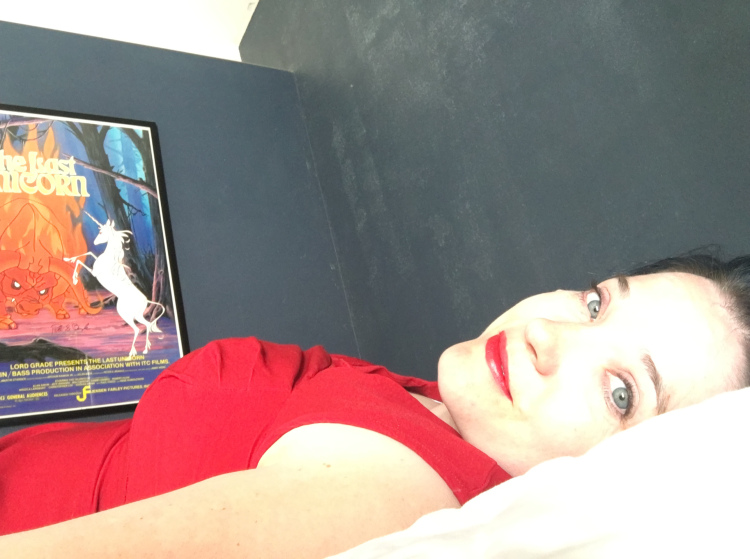“Well, there was this really tough-looking guy in my junior high school. We all gave him a very wide berth when we passed him in the hallway. And if he asked us in the school cafeteria what our moms had prepared for us, we all were quick to surrender our sandwiches to him no matter how hungry we were. I can’t exactly recall his name, Oshinsky, or something like that. I had him in mind when the cameras began rolling.” The truth is Al and I came from two different worlds and probably never interacted. In a profile of Pacino published in a September 2014 issue of The New Yorker, writer John Lahr says the actor “was smoking at nine, chewing tobacco at ten and drinking hard liquor at thirteen.”
 Ex-schoolmate Al Pacino played Michael Corleone in “The Godfather” movie series.
But there’s one reported comment by Pacino in a Daily News article a few years back that gives me a warm feeling of shared experiences. It’s when he reminisces, “The Dover Theater is where I learned how to understand some of the more sophisticated movies.”
In fact, that very Dover was the place where I, too, discovered the magic of the cinema.
It made no difference that the Dover was a last-run neighborhood theater where movies came to die after opening in Manhattan and then playing the RKO and Loews circuit theaters in the outer boroughs. Sandwiched between small stores on Boston Road just a few blocks from my walk-up apartment, the Dover was the first movie theater my parents allowed me to attend alone. And though I had to endure the indignity of being herded into the Children’s Section with boisterous kids who—unlike Pacino and me— talked during the screening and failed to take movies seriously, I emerged (usually after some three hours of a double-feature presentation) a cinephile every time.
One more lasting memory of the Dover: My junior high school once arranged for a private morning screening at the theater of the 1953 film version of Shakespeare’s “Julius Caesar.” Its outstanding cast, which included Marlon Brando, James Mason, John Gielgud and Deborah Kerr, impressed me. Pacino might have been in the audience that morning as well. And perhaps he had that movie in mind when he recalled for the Daily News the “sophisticated” movies” he saw at the Dover that had an impact on his life.
By the early 1970s Pacino had already made it to Hollywood and I was married with two children and living in one of the 35 high-rise buildings in Co-op City in the northeast Bronx. For much of our stay there the longest part of my weekday commute to work entailed the elevator ride down from my 23rd-floor apartment to the ground floor. From there I would then cross one street to a small shopping center, descend a flight of stairs to the lower level and arrive at the storefront offices of City News, the independent weekly community newspaper where I served as editor for a little over three years.
Some four decades have passed since we traded our two-bedroom apartment in Co-op City for a house in Yonkers. But earlier this year my wife was reading “My Beloved World,” the autobiography of Justice Sotomayor published by Alfred A. Knoff in 2013, when she read this line in Chapter 12: “Three days before Christmas [Dec. 22, 1970] and midway through my freshman year at Cardinal Spellman High School, we moved to a new apartment in Co-op City.”
Ex-schoolmate Al Pacino played Michael Corleone in “The Godfather” movie series.
But there’s one reported comment by Pacino in a Daily News article a few years back that gives me a warm feeling of shared experiences. It’s when he reminisces, “The Dover Theater is where I learned how to understand some of the more sophisticated movies.”
In fact, that very Dover was the place where I, too, discovered the magic of the cinema.
It made no difference that the Dover was a last-run neighborhood theater where movies came to die after opening in Manhattan and then playing the RKO and Loews circuit theaters in the outer boroughs. Sandwiched between small stores on Boston Road just a few blocks from my walk-up apartment, the Dover was the first movie theater my parents allowed me to attend alone. And though I had to endure the indignity of being herded into the Children’s Section with boisterous kids who—unlike Pacino and me— talked during the screening and failed to take movies seriously, I emerged (usually after some three hours of a double-feature presentation) a cinephile every time.
One more lasting memory of the Dover: My junior high school once arranged for a private morning screening at the theater of the 1953 film version of Shakespeare’s “Julius Caesar.” Its outstanding cast, which included Marlon Brando, James Mason, John Gielgud and Deborah Kerr, impressed me. Pacino might have been in the audience that morning as well. And perhaps he had that movie in mind when he recalled for the Daily News the “sophisticated” movies” he saw at the Dover that had an impact on his life.
By the early 1970s Pacino had already made it to Hollywood and I was married with two children and living in one of the 35 high-rise buildings in Co-op City in the northeast Bronx. For much of our stay there the longest part of my weekday commute to work entailed the elevator ride down from my 23rd-floor apartment to the ground floor. From there I would then cross one street to a small shopping center, descend a flight of stairs to the lower level and arrive at the storefront offices of City News, the independent weekly community newspaper where I served as editor for a little over three years.
Some four decades have passed since we traded our two-bedroom apartment in Co-op City for a house in Yonkers. But earlier this year my wife was reading “My Beloved World,” the autobiography of Justice Sotomayor published by Alfred A. Knoff in 2013, when she read this line in Chapter 12: “Three days before Christmas [Dec. 22, 1970] and midway through my freshman year at Cardinal Spellman High School, we moved to a new apartment in Co-op City.”
 My former downstairs neighbor Sonia Sotomayor, now on the U.S. Supreme Court
My former downstairs neighbor Sonia Sotomayor, now on the U.S. Supreme CourtLater on in the chapter, the 16-year-old Sotomayor recalls her active high school life, when “our home became party central as well as campaign headquarters for student council elections” and she “threw victory parties when we won and consolation parties when we lost.” Then she startled my wife by throwing in this biographical tidbit: “Throughout my high school years, apartment 5G, 100 Dreiser Loop, was the place to be.” Wow. It turns out that the first Latina and third female to serve on the U.S. Supreme Court and her mother were our neighbors, although 18 floors separated her apartment from ours. There’s more to this close-encounters tale. In “My Beloved World,” she also recalls the day “I started a new job at Zaro’s Bakery in the small shopping center across the street from our building in Co-op City.” In other words, Sotomayor not only lived below us at 100 Dreiser Loop, she worked above me on the main level of the Dreiser Loop Shopping Center. And it’s highly probable that my wife and I were served by her during the hours she worked behind the counter. Perhaps I even engaged in small (but life-changing) talk with her while stopping off at the bakery on my way to work: “Good morning. I’ll have a cinnamon danish to go.” “I’m sorry, we sold the last one five minutes ago.” “Is there no justice in this world?” I respond, half-jokingly.” “There should be,” she earnestly acknowledges. And an idea begins to form in this young girl’s mind.
 Let me add a third name to my future-famous list. From 1967-70 I worked at 1501 Broadway in the New York publicity department of Paramount Pictures. Another associate publicist who worked alongside me announced one day (and here my memory may be a bit fuzzy) that he was quitting his job to go off to his family’s home in Cape Cod to complete a novel. Years later I happened to be at an airport bookstore carousel thumbing through the paperback edition of the best-selling novel “The Seven-Per-Cent Solution,” when I turned to the back-cover blurb and photo on the author, Nicholas Meyer. That was the “kid” (four years my junior) who left Paramount to seek his fortune elsewhere.
I don’t know if “The Seven-Per-Cent Solution,” a fanciful adventure where Sigmund Freud meets Sherlock Holmes, was the book he was working on. But he later achieved further critical and commercial success in writing the screenplay for the 1976 film version, writing and directing the movie “Time After Time” (1976) and directing “Star Trek II: The Wrath of Khan” (1982).
At the very least, his sense of timing was better than mine. I stayed too long at Paramount. After being acquired by Gulf + Western, the motion picture company began implementing a series of downsizing measures for New York that eventually cost me and others, including my boss, their jobs.
Advertisements
Share this:
Let me add a third name to my future-famous list. From 1967-70 I worked at 1501 Broadway in the New York publicity department of Paramount Pictures. Another associate publicist who worked alongside me announced one day (and here my memory may be a bit fuzzy) that he was quitting his job to go off to his family’s home in Cape Cod to complete a novel. Years later I happened to be at an airport bookstore carousel thumbing through the paperback edition of the best-selling novel “The Seven-Per-Cent Solution,” when I turned to the back-cover blurb and photo on the author, Nicholas Meyer. That was the “kid” (four years my junior) who left Paramount to seek his fortune elsewhere.
I don’t know if “The Seven-Per-Cent Solution,” a fanciful adventure where Sigmund Freud meets Sherlock Holmes, was the book he was working on. But he later achieved further critical and commercial success in writing the screenplay for the 1976 film version, writing and directing the movie “Time After Time” (1976) and directing “Star Trek II: The Wrath of Khan” (1982).
At the very least, his sense of timing was better than mine. I stayed too long at Paramount. After being acquired by Gulf + Western, the motion picture company began implementing a series of downsizing measures for New York that eventually cost me and others, including my boss, their jobs.
Advertisements
Share this:




